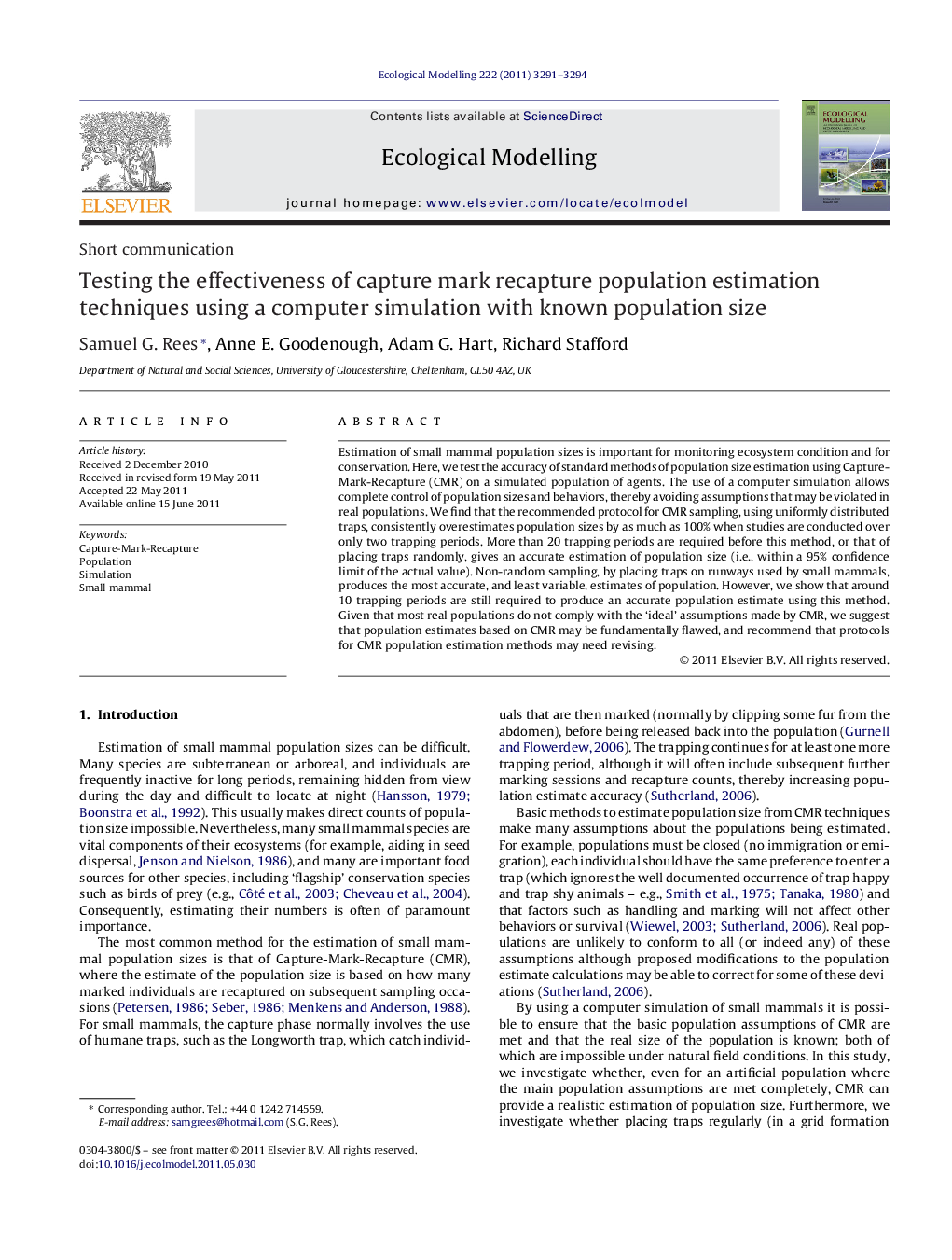| Article ID | Journal | Published Year | Pages | File Type |
|---|---|---|---|---|
| 4376689 | Ecological Modelling | 2011 | 4 Pages |
Estimation of small mammal population sizes is important for monitoring ecosystem condition and for conservation. Here, we test the accuracy of standard methods of population size estimation using Capture-Mark-Recapture (CMR) on a simulated population of agents. The use of a computer simulation allows complete control of population sizes and behaviors, thereby avoiding assumptions that may be violated in real populations. We find that the recommended protocol for CMR sampling, using uniformly distributed traps, consistently overestimates population sizes by as much as 100% when studies are conducted over only two trapping periods. More than 20 trapping periods are required before this method, or that of placing traps randomly, gives an accurate estimation of population size (i.e., within a 95% confidence limit of the actual value). Non-random sampling, by placing traps on runways used by small mammals, produces the most accurate, and least variable, estimates of population. However, we show that around 10 trapping periods are still required to produce an accurate population estimate using this method. Given that most real populations do not comply with the ‘ideal’ assumptions made by CMR, we suggest that population estimates based on CMR may be fundamentally flawed, and recommend that protocols for CMR population estimation methods may need revising.
► Using an agent-based simulation of small mammals, we model a simple, closed population to assess the effectiveness of Capture-Mark-Recapture methods to estimate population size. ► CMR methods greatly overestimate the size of the population if the number of trapping periods is low. ► Placing traps in a uniform grid or randomly require >15 trapping days to accurately estimate the population size. ► Placing traps on runways appears to be a more accurate method of assessing population size and requires 10 trapping periods to accurately estimate the population size.
